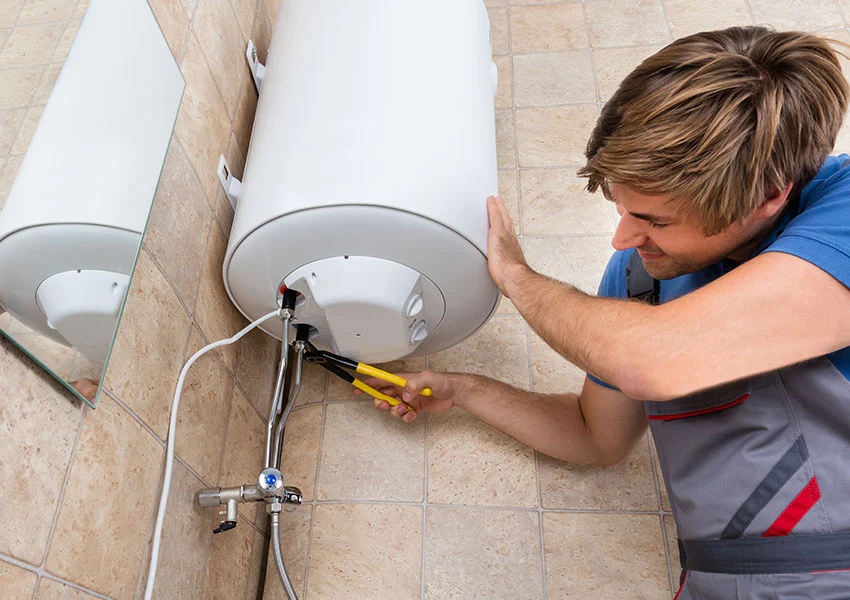We have stumbled on the article involving What Kind of Maintenance Do Water Heaters Need? down the page on the web and felt it made good sense to talk about it with you over here.

Warm water is essential for everyday convenience, whether it's for a refreshing shower or washing meals. To ensure your warm water system runs efficiently and lasts much longer, regular upkeep is key. This post provides functional pointers and insights on just how to maintain your home's warm water system to avoid interruptions and pricey repair work.
Intro
Maintaining your home's warm water system might appear daunting, but with a few straightforward steps, you can guarantee it runs smoothly for many years ahead. This guide covers whatever from recognizing your warm water system to DIY maintenance ideas and recognizing when to hire expert aid.
Importance of Preserving Your Warm Water System
Normal maintenance not only prolongs the life-span of your hot water system but likewise guarantees it runs efficiently. Overlooking upkeep can bring about decreased effectiveness, greater power costs, and also premature failure of the system.
Indications Your Warm Water System Demands Upkeep
Knowing when your hot water system needs interest can stop significant concerns. Keep an eye out for signs such as inconsistent water temperature, unusual sounds from the heating unit, or corroded water.
Purging the Hot Water Heater
Purging your water heater removes sediment buildup, improving effectiveness and lengthening its life.
Monitoring and Changing Anode Rods
Anode poles protect against deterioration inside the container. Inspecting and replacing them when broken is vital.
Complicated Problems Requiring Specialist Aid
Instances include major leakages, electric issues, or if your water heater is consistently underperforming.
Regular Expert Maintenance Benefits
Specialist upkeep can include complete assessments, tune-ups, and guaranteeing compliance with safety standards.
Evaluating and Readjusting Temperature Level Setups
Changing the temperature settings makes certain optimum efficiency and security.
DIY Tips for Maintenance
You can execute numerous upkeep tasks yourself to maintain your hot water system in leading problem.
Checking for Leaks
Regularly evaluate pipelines and connections for leaks, as these can bring about water damages and higher bills.
Recognizing Your Hot Water System
Prior to diving right into maintenance tasks, it's handy to comprehend the fundamental components of your warm water system. Usually, this includes the hot water heater itself, pipelines, anode rods, and temperature controls.
Monthly Upkeep Tasks
Routine monthly checks can aid catch minor concerns before they rise.
Checking Pressure Alleviation Valves
Checking the pressure safety valve ensures it operates properly and prevents too much pressure build-up.
Protecting Pipes
Shielding hot water pipelines decreases warmth loss and can conserve energy.
When to Call a Specialist
While DIY upkeep is advantageous, some concerns require specialist competence.
Conclusion
Routine maintenance of your home's hot water system is essential for effectiveness, longevity, and cost financial savings. By following these suggestions and recognizing when to seek specialist aid, you can guarantee a trustworthy supply of warm water without unexpected interruptions.
How to Maintain an Instant Hot Water Heater
Before tinkering with your hot water heater, make sure that it’s not powered on. You also have to turn off the main circuit breaker and shut off the main gas line to prevent accidents. Also turn off the water valves connected to your unit to prevent water from flowing into and out of the appliance. 2. When you’re done, you have to detach the purge valves’ caps. These look like the letter “T” and are situated on either side of the water valves. Doing so will release any pressure that has accumulated inside the valves while at the same time avoid hot water from shooting out and burning your skin. 3. When the purge valves’ caps are removed, you have to connect your hosing lines to the valves. Your unit should have come with three hoses but if it didn’t, you can purchase these things from any hardware or home repair shops. You can also get them from retail stores that sell water heating systems. Read the user’s manual and follow it to complete this task properly. When the hosing lines are connected, open the purge port’s valves. 4. You should never use harsh chemical cleaners or solutions when cleaning your unit. Make use of white vinegar instead. It should be undiluted and you’ll probably use about 2 gallons. 5. Now flush your water heater. This task should probably take about 40 minutes. We can’t give you specific directions for this because the procedure is carried out depending on the type, model and brand of your heater. With that being said, refer to the user’s manual. 6. When you’re done draining the unit, you have to turn off the purge port valves again. Remove the hosing lines that you earlier installed on each of the water valves. Put the valve caps (purge port) back in their respective places and be very careful so as not to damage the rubber discs that are found inside these caps. 7. Now that everything’s back in place, check your user’s manual again to find out how to reactivate your water heating system. 8. Once it is working, turn one of your hot water faucets on just to let air pass through the heater’s water supply pipes. Leave the tap on until water flows smoothly out of it. https://www.orrplumbing.com/blog/2014/september/how-to-maintain-an-instant-hot-water-heater/

We were guided to that report on What Kind of Maintenance Do Water Heaters Need? from a friend on a different domain. Loved our review? Please share it. Help somebody else check it out. Thanks for going through it.
Recurring Service Plans